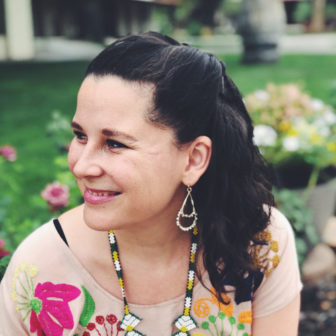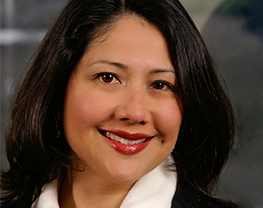
kostasgr/Shutterstock
.
Emergency funds for nonprofits and small businesses could flow again as congressional leaders negotiate billions more for the Paycheck Protection Program. An agreement could come today, news reports said.
For most nonprofits, the money can’t come too soon.
In less than two weeks, the initial $349 billion in federal emergency loans was depleted.
And more than 60% of nonprofits nationally say they’re not able to provide the services they normally do. That means they’re not gaining income from services. They’re also getting fewer donations and, in some cases, less government funding.
A survey of 500 nonprofits in Central Texas found that 20% said they couldn’t survive more than two months without assistance; 34% could last from two to six months.
Like other nonprofits, those that serve youth find themselves in a precarious position and are having to live by their wits. Many have applied for emergency loans, but few have received money yet.
But there are things they can do.
“Stay close to updates,” said Hilda Polanco, founder and CEO of FMA, or Fiscal Management Associates, which advises nonprofits on finances. “We want every nonprofit to be at the bank’s door [when funds are available].”
Nonprofits that have not yet applied should go ahead and apply without waiting for new funding to be approved, John Arensmeyer, CEO of Small Business Majority, told CNN.
A look at one organization’s experience
In Austin, Texas, Youth Rise Texas was able to complete its emergency loan application for the Paycheck Protection Program in about a week after federal funding to banks through the Small Business Administration (SBA) officially began on April 3. It had the needed documents in hand.

Kandace Vallejo
“We were fortunate that we already banked with an SBA lender,” said Kandace Vallejo, founding executive director of the 6-year-old organization, which serves young people impacted by deportation and incarceration. It focuses on civic engagement, community building and leadership development.
The organization’s operating budget had already taken a 10% hit, Vallejo said. Some in-person fund-raising activities had to be canceled and new expenses arose as staff began to work remotely and move services online.
It had a budget of $540,000 this fiscal year and had expected considerable growth next year, Vallejo said. But all that is now in question.
To deal with the uncertainty, the organization has projected three different scenarios.
“We’re doing some different models,” Vallejo said. A generous model assumes that revenue will continue, a more conservative model projects a 20% to 30% loss in revenue and a third model looks at a 50% to 60% drop.
“We’re just going to monitor the situation,” Vallejo said. “We recognize we are headed into a global recession.”
Although its SBA loan application has been accepted, Youth Rise Texas has not received any of the funds yet.
It’s still more fortunate than some. Vallejo is aware of other nonprofits that applied and were turned down. Some expressed fear that banks weren’t approving loan requests under $100,000, she said. A California-based company is suing Wells Fargo, saying the bank unfairly prioritized loans for large businesses in order to reap higher processing fees.
Youth Rise Texas does have a reserve fund. It could stay open — providing reduced services — possibly for 12 months, Vallejo said.
Paycheck Protection Program loans have been provided on a first come, first served basis. They are for nonprofits and businesses that are trying to retain their workforce, Polanco said. Loans can be up to 2½ times an organization’s monthly payroll and are forgivable if used for payroll and certain operating expenses.
Nonprofits that already have relationships with bankers — particularly those that offer SBA loans — have had a smoother experience applying, Polanco said.
Those that were less connected and didn’t have information coming their way may have found the process more difficult, she said.
How to ride out the financial uncertainty
It’s critical that nonprofits do scenario planning right now, Polanco said.
“It’s the top tool for navigating these uncertain times,” she said. Nonprofits should look at the best case, moderate case and worst case scenario for their revenue.
Leaders should develop strategies to manage cash flow in each scenario, she said. A revenue scenario planning tool — along with a number of other tools — is available from a Wallace Foundation-supported website, strongnonprofits.org.
Determine the core operations that should be prioritized, she said. This puts an organization in a much better position if some activities have to be let go.
Understand your financial position, she said in a recent blog and webinar, by looking at the funds you have accumulated and determining which are restricted and which are not.
Understand where you have flexibility, she said. Look at funding sources and the risks for each one.
Polanco and other advisors urge nonprofit leaders to talk with funders they have worked with over time. Ask for flexibility, they say.

Mission Capital
Madge Vasquez
“Programs are converting program grants to general operating grants,” said Madge Vasquez, chief executive officer of Mission Capital, a nonprofit intermediary in Austin that surveyed 500 nonprofits in the area.
Nonprofits’ most pressing need is for flexible funding, the survey showed.
Organizations reported they needed funding for operations and for transitioning to the virtual delivery of services. They also needed help in getting basic supplies.
Nearly 80% in the Central Texas survey said their services to the community had been disrupted. More than one-third said they weren’t going to be able to deliver services their grants requiredt. One-fourth had cut employee hours or laid off or furloughed employees.
“Nonprofits have very thin margins. It’s just a reality of the nonprofit sector,” Vasquez said.
The pandemic has been so sudden that it opens up a conversation with funders about their grants, Polanco said in her webinar.
“I think you will be pleasantly surprised,” she said. Funders want nonprofits to be in a position to deliver programs.
“Nothing surpasses talking to your funder,” she said.
The need for equity
Vasquez said Mission Capital is recommending that funders design rapid responses with an eye toward equity. The pandemic is ravaging low-income communities, she said.
St. David’s Foundation in Austin, for example, has created a $10 million COVID-19 Recovery Fund to support nonprofits working on the front lines in vulnerable communities in the area.
Nonprofits serving people of color and tribal groups may have had less access to the Paycheck Protection Program, Dan Cardinal of Independent Sector, a membership organization for nonprofits, foundations and corporations, wrote in his blog.
A youth-serving nonprofit may find itself in a vulnerable position because its funding comes from different sources, including state government and private philanthropy, Polanco said.
Preliminary results from a survey of such programs in Oregon showed that nearly half received funding from parent fees, said Beth A. Unverzagt, director of OregonASK, a collaboration of expanded learning organizations. More than one-third of the organizations were federally funded through the 21st Century program, and about 17% had private foundation funding, she said.
As of Thursday, 60% of the more than 90 program providers that had responded thus far had closed, according to the Oregon survey. Almost 40% reported that staff had been furloughed or laid off.
Many of the organizations had applied for emergency loans, Unverzagt said. “Some of them got [the application] in as quickly as possible,” she said.
Federal relief money, whether through the Paycheck Protection Program or in funds to states, is difficult for community organizations to access, she said.
“I don’t see the process working well for community-based organizations and communities of color,” she said. “There needs to be improvement.”
Those are the organizations that best know the needs of the community, she said.





























